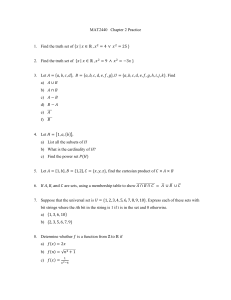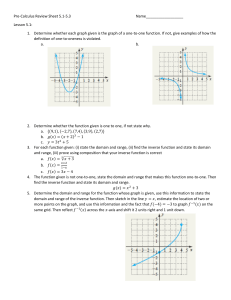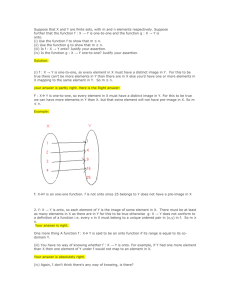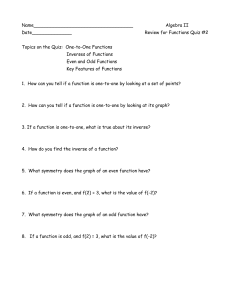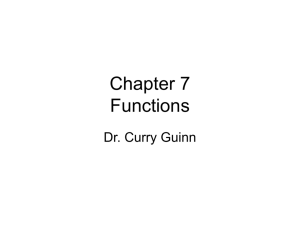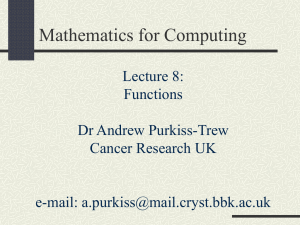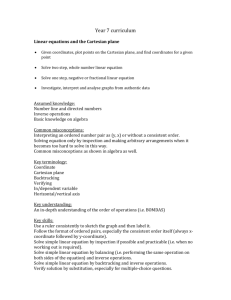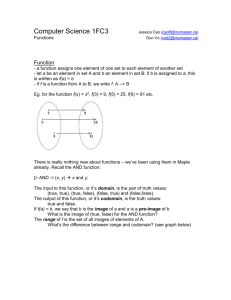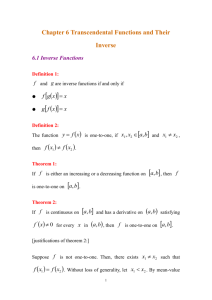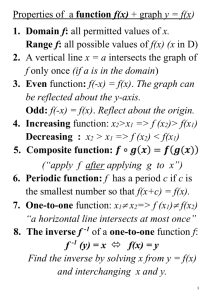Sets and Functions
advertisement
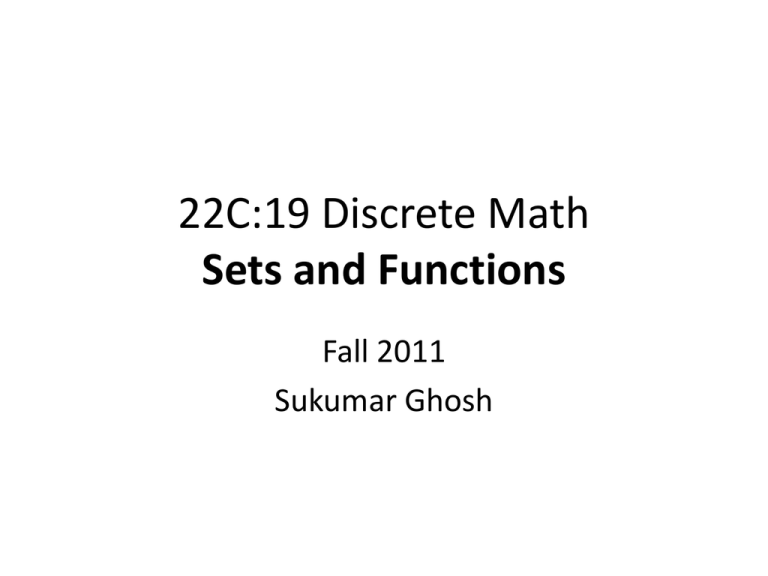
22C:19 Discrete Math
Sets and Functions
Fall 2011
Sukumar Ghosh
What is a set?
Definition. A set is an unordered collection of objects.
S = {2, 4, 6, 8, …}
COLOR = {red, blue, green, yellow}
Each object is called an element or a member of the set.
Well known Sets
Well known sets
N = {0, 1, 2, 3 …}
set of natural numbers
Z = {…, -2, -1, 0, 1, 2, …} set of integers
Z+ = {1, 2, 3, …} set of positive integers
R = the set of real numbers
Set builders
A mechanism to define the elements of a set.
S = {x | x ∈ N ⋀ x is odd ⋀ x <20}
Belongs to,
an element of
This means, S = {1, 3, 5, 7, 9, 11, 13, 15, 17, 19}
Venn diagram
e
i
a
o
u
The set V of vowels
The universal set U contains all objects under consideration
Sets and subsets
The null set (or the empty set} ∅ contains no element.
A ⊆B (A is a subset of B) if every element is also an element of B.
Thus
{0, 1, 2} ⊆ N, S ⊆ S,
∅ ⊆ any set
A ⊂ B (called a proper subset of B) if A ⊆B and A ≠ B
The cardinality of S (|S|) is the number of distinct elements in S.
Power Set
Given a set S, its power set is the set of all subsets of S.
Let S = (a, b, c}
power set of S = {∅, {a}, {b}, {c}, {a, b}, {b, c}, {a, c} {a, b, c}
Question. What is the cardinality of the power set of S?
Cartesian Product of Sets
Ordered pair. It is a pair (a, b) for which the order is important
(unlike a set)
Example. The coordinate (x, y) of a point.
Cartesian Product of Set (Example)
A = {a1, a2, a3}
B= {b1, b2}
A ⨉ B = {(a1, b1), (a1, b2), (a2, b1), (a2, b2), (a3, b1), (a3, b2)}
Union of Sets
Intersection of Sets
Set of elements that belong to both sets
Union and Intersection
Let A = {1, 2, 3, 4, 5} and B = {0, 2, 5, 8}
Then A ⋃ B = {0, 1, 2, 3, 4, 5, 8}
And A ⋂ B = {2, 5}
(A union B)
(A intersection B)
Disjoint Sets
Set difference & complement
Let A = {1, 2, 3, 4, 5} and B = {0, 2, 5, 8}
A – B = {x | x ∈A ∧ x ∉ B}
So, in this case, A – B = {1, 3, 4}
Also A
= {x | x ∉ A}
Set difference
Complement
Set identities
Recall the laws (also called identities or theorems) with propositions (see page 24).
Each such law can be transformed into a corresponding law for sets.
Identity law
Domination law
Idempotent laws
Double negation
Commutative law
Associative law
De Morgan’s law
Absorption law
Negation law
Replace ⋁ by ⋃
Replace ⋀ by ⋂
Replace ¬ by complementation
Replace F by the empty set
Replace T by the Universal set U
Example of set identity
Visualizing DeMorgan’s theorem
Visualizing DeMorgan’s theorem
Function
Let A, B be two non-empty sets. (Example: A = set of students,
B = set of integers). Then, a function f assigns exactly one element
of B to each element of A
function
f:A→B
domain
Co-domain
(If we name the function f as age, then it “maps” one integer B to
each student, like age (Bob) = 19}
Terminology
Example of the floor function
Examples
Exercises
Why is f not a function from R to R if
(a) f(x) = 1/x
(b) f(x) = x ½
(c) f(x) = ±(x2 + 1) ½
More examples
What is the difference between co-domain and range?
One-to-one functions
The term injective is synonymous with one-to-one
Onto Functions
The term surjective is synonymous with onto.
Exercise
1-to-1 and onto function are called bijective.
Arithmetic Functions
Identity Function
Inverse Function
Inverse Function
Inverse functions can be defined only if the original function is
one-to-one and onto
Composition of functions
Note that f(g(x) is not necessarily equal to g(f(x)
Some common functions
Floor and ceiling functions
Exponential function ex
Logarithmic function log x
Learn about these from the book (and from other sources).
